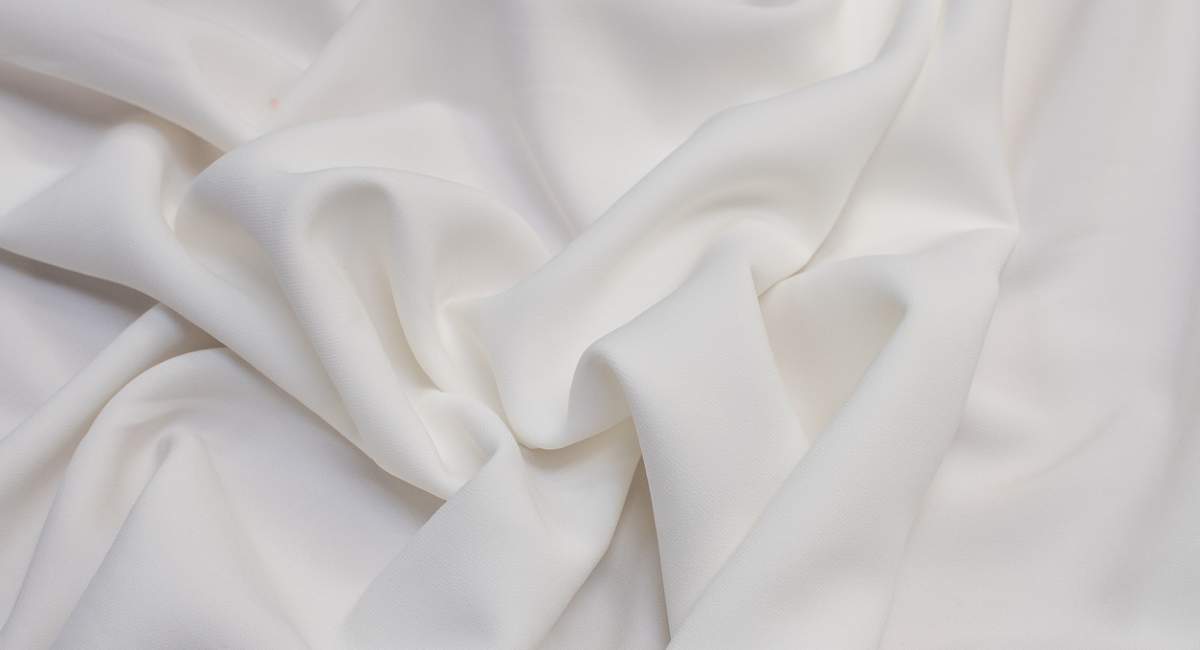
![]()
Many buyers and designers are on the lookout for eco-friendly clothing. As you check the labels and research the fabrics, you will probably come across a fabric called modal. Modal is often used in soft, breathable clothing items, such as pajamas, underwear, T-shirts, and sportswear. It feels great on your skin, but is it also great for the environment? Let’s take a look at the facts.
What is Modal Made From?
Modal fabric is made from beech tree pulp. It’s considered a form of rayon, which is also plant-based. The production process of modal is rather complicated, and it involves quite a lot of chemicals, including sodium hydroxide and carbon disulfide. Producers begin with wood chips, turn that into pulp, purify the pulp into cellulose, and then make sheets from the cellulose.
Next, the sheets are submerged into sodium hydroxide, which breaks it down into pieces. These pieces go through another chemical immersion, and an orange substance comes out. It is no longer purely plant. The new substance has another chemical soak, and it’s time to make fibers out of the substance. Then, it gets bathed in sulfuric acid. Now, it’s ready to be modal yarn, which gets woven into modal fabric.
Does that sound like a lot of chemical processes? Actually, it doesn’t use as many chemicals as some other types of rayon.
Because a new substance was created during the process, modal fabric is called a semi-synthetic fabric.
The Properties of Modal
This fabric is oh-so-soft. Clothes made out of modal are usually very comfortable. The fabric has a high amount of stretchability. It also drapes nicely, much like silk does. The fabric is not prone to pilling. It is durable and breathable, which makes it great for sportswear.
Best of all, modal is completely biodegradable.
Why Choose Modal?
There are many benefits to using modal fabric in your fashions. People love wearing it because it is cozy, stretchy, and doesn’t wear out quickly. It doesn’t shrink easily in the wash. Unlike some rayons, there’s no need to dry-clean. Modal fashions usually look great, feel great, and wash great!
Here comes the big question you’ve been waiting for. Should you choose modal fabric for its eco-friendly benefits? The answer is complicated. The main reason it is classified as good for the environment is because it is biodegradable.
Now, let’s also take a look at the production process. In comparison to cotton, producing modal uses less water and land. That’s good. Also, one of the main textile companies that produces modal commits to leaving a very small carbon footprint. This company is called Lenzing AG, based in Austria. It markets its version of modal under the name TENCEL. If you’re going to use modal fabric for your eco-conscious fashions, Lenzing’s modal is probably the most sustainable product.
Disadvantages of Choosing Modal
Modal has a reputation for being environmentally friendly. However, not all textile companies have the same standards as Lenzing. There are other companies that cut trees in rainforest areas to produce modal. They are not so careful with the harmful chemicals that are used in the production process. In short, some companies are less responsible about their processes and their sourcing.
You can try to commit to buying only Lenzing products, but that gets tricky because Lenzing sells yarn to companies who make the fabrics. It can be very difficult to trace a modal T-shirt back to the company that produced the yarn that it’s made from. Not only that, but modal is often mixed with other fabrics, such as cotton, so the T-shirt may not even be from a single source.
Environmental issues aside, are there any other disadvantages to using modal fabric? You might be put off by its price. Modal costs more than polyester or nylon, although it is definitely cheaper than silk.
If you’re looking to keep warm, then you should choose a different fabric. Modal will keep you cooler in the summer because of its moisture-wicking properties, but it doesn’t have the ability to keep heat in during cold weather.
A Very Short History of Modal Fabric
Modal is a relatively young fabric, first developed in Japan in the 1950s. It was intended to be a substitute for silk. Lenzing AG adapted the idea in the 1960s and has been making modal ever since, improving the process over the years.
Using Modal Fabric in Your Brand
Is your brand eco-conscious? Many buyers believe in spending more if they are getting a product that is genuinely good for the environment. Using modal in your brand is a great way to show that you care about your global footprint, especially if you know that the fibers in your fashions come from Lenzing. You can use the word “natural” in your marketing because modal does originate from beech trees.
Pure modal has a luxurious feel, so it can be an alternative to silk. It is also soft and breathable, which makes it a viable alternative to cotton. Consider using it for yoga pants, swimwear, and lingerie. Modal is tightly woven enough to be considered a luxury fabric for bed sheets. If it’s good for sheets, why not pajamas and robes? Remember that modal is a light material, so it’s best for summery fashions.
If you’re using modal blended with another fiber, such as cotton, you can use it in many types of fashions, including soft, luxurious shirts and dresses. The modal usually improves the cotton, so the fabric will drape better and feel better, too. Plus, a modal and cotton blend will wrinkle less than plain cotton. Modal dyes well, too, so you can get beautifully-colored fabric for your clothing.
Play up the durability of modal fabric by creating fashions that are meant for hard use, such as exercise clothing and bike shorts.
